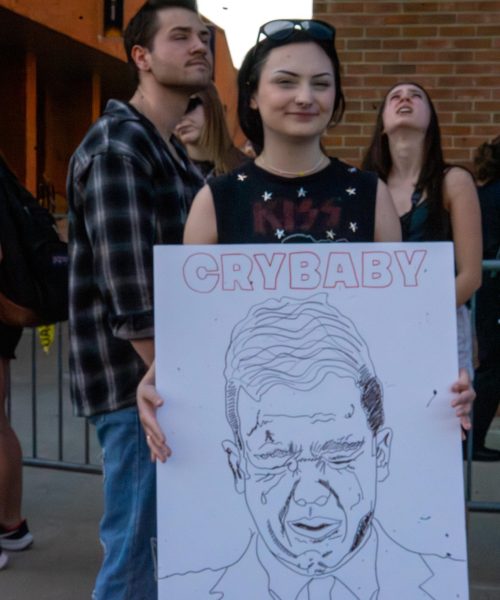Student workers can expect thicker wallets
January 19, 2007
Senior fashion design major Kristina Hill fills out forms at the Dunbar front desk. Senior fiscal manager Rick Schneiderman said all residence services employees now make at least $6.85. SAM TWAREK | DAILY KENT STATER
Credit: John Proppe
Kent State will spend a hefty chunk of change this year, but it’s not all for new programs or campus improvements. Instead, between $600,000 and $1.2 million will be used to pay higher wages to many of its workers.
When Ohio’s new constitutional amendment took effect Jan. 1, state minimum wage increased from $5.15 to $6.85 an hour, which means Kent State must pay all minimum wage workers an additional $1.70 an hour.
David Creamer, senior vice president for administration, said the university will have to pay for the increase, which will affect almost 2,000 student employees.
“When other student wages are also increased that require a premium above the minimum wage, the increased cost will be even more,” Creamer said.
Most of the additional cost will be covered by the departments that employ minimum wage workers, Creamer said, and he does not expect the university to cut any services or raise tuition due to the increase.
“I don’t think you’ll see any significant changes,” Creamer said. “It’s not like you’re going to see hours at dining locations or other campus buildings being shortened.”
He also said he does not expect to see a sudden decrease in student employees.
To help fund the minimum wage increase, Kent State’s administration gave additional money to departments in need, including the library, which Creamer said has been hit the hardest.
Mark Weber, dean of libraries and media science, said the library has about 200 student workers whose wages will be affected.
Weber said the increase in minimum wage will cost the library between $80,000 and $85,000 this year alone. Finding extra money, he said, could eventually become a problem, affecting library hours and the number of employees hired.
“That’s a real distinct possibility,” Weber said. “In order to be able to afford the increase, there will have to be fewer workers.”
According to the amendment, Ohio’s minimum wage will be increased every year to compensate for inflation. Weber said he doesn’t know how the library will get the money it needs next year.
“I don’t think the University can afford to do this every time there is an increase,” he said.
Creamer said he is not sure how the university will provide money to hard-hit departments in the future.
“That depends on a lot of circumstances. That’s one of the things we’re thinking about,” he said, although he added that the cost of the increase has been more difficult to deal with this year than it will be in the future.
“The impact of this is much more substantial in the first year,” he said. “Financially, it will be more manageable in the future.”
John Goehler, assistant director of Dining Services, said his department doesn’t have many minimum wage workers. He said he doesn’t know how much the increase will cost Dining Services, but the legislation still came as shock to its budget.
“Because we don’t get any state or university funding, the increase will have to be worked out in our budget,” Goehler said.
He said the increase will probably cause Dining Services to cut back on workers’ hours in order to make up for extra money. Eventually, increases will have to be passed on to customers.
Still, Creamer said he likes the idea of students making more money.
“We feel an obligation to students to help them find jobs,” he said. “They make up a large part of our work force.”
Contact news correspondent Kevin Gareau at [email protected].























